Last Chance to Catch NYC's Holiday Notalgia Train
We met the voices of the NYC subway on our nostalgia ride this weekend!

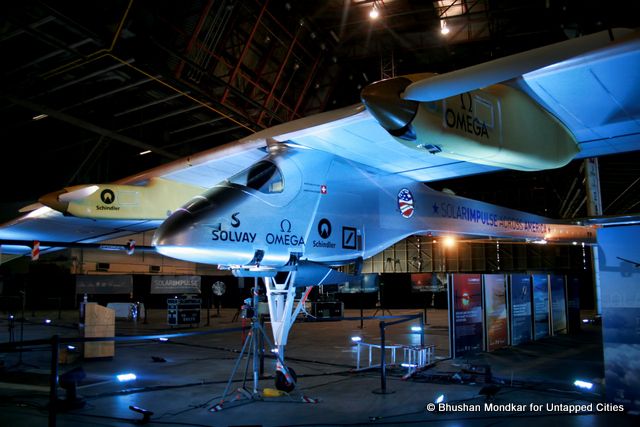
Solar Impulse- HB SIA
Earlier this month, the Solar Impulse, a groundbreaking solar airplane was on display in Hanger 19 at New York City’s John F. Kennedy Airport. Created in Switzerland, it’s the first solar airplane in history to travel night and day for 26 hours straight.
Inside the massive hanger, the Solar Impulse is at once enormous and un-intimidating. With its streamlined structure, Solar Impulse sat center stage surrounded by experts eagerly awaiting questions and comments from enthusiastic visitors. Alenka Zibetto, Solar Impulse’s Media Relations Coordinator explained that at just 3.5 thousand pounds, the plane has a wingspan of 208 feet, equivalent to that of a Boeing 747. The plane is designed to accommodate just one pilot.
Created by Balloonist Bertrand Piccard and Engineer Andre Borschberg, Solar Impulse was completed in Switzerland on July 8, 2010 and took its first flight across the country. While the power of renewable energy is witnessed though the Solar Impulse, it is not meant to overhaul the current configuration of commercial aircrafts. Rather, it serves as a symbol of how the world can survive if renewable energy is harnessed and utilized.
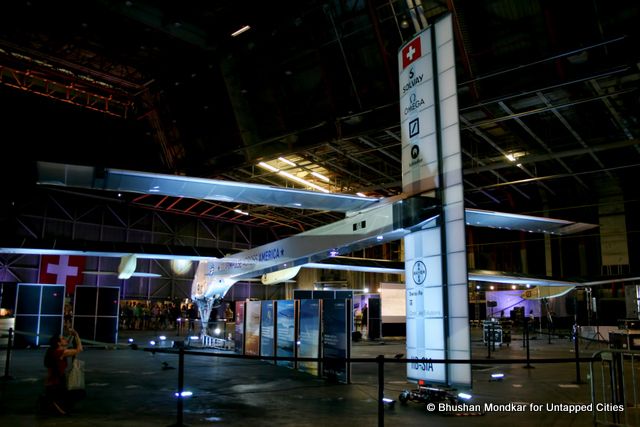
Solar Impulse: Across America!

The slender and wide wingspan lends great drama and interest to the physical design that engineers and designers found most efficient in creating a long-distance solar airplane.
This Spring, Solar Impulse embarked on a new challenge to fly coast to coast across America. Beginning in San Francisco on May 3rd, Solar Impulse flew to Phoenix, followed by Dallas, St. Louis, Washington D.C. and finally New York City. Making stops in each location, Solar Impulse was on display for the public, offering the opportunity to view this remarkable accomplishment of sophisticated engineering and design.

Solar Impulse soars above major U.S Cities along its 3,000 mile journey across America.
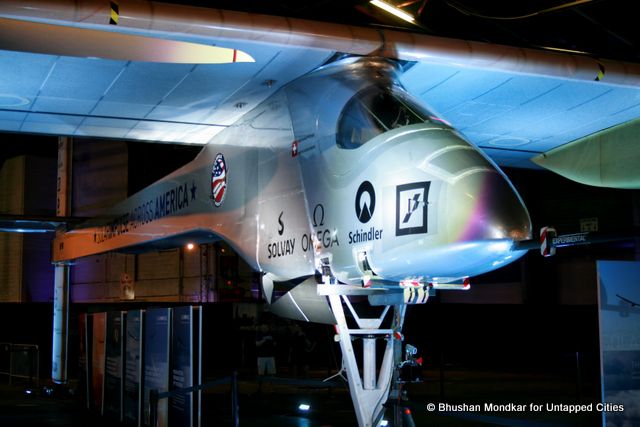
A snug seat for the pilot of this solar wonder. Less weight and baggage = more flight time and speed.

The underside of the massive wing supporting the solar panels.
The aerodynamic and extremely light-weight body of Solar Impulse is attributed to its sleek carbon-based structure. Alenka Zibetto gave Untapped Cities a behind-the-scenes tour of the plane from the hangar’s upper deck, allowing us to view the 11,628 resin-coated solar panels spanning the two massive wings. Solar rays absorbed by these panels transfer energy to four lithium batteries powering the engines and accounting for one-quarter of the planes weight.
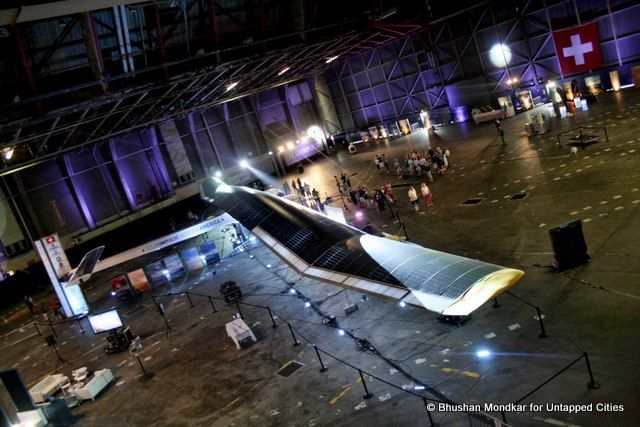
Solar panels meticulously woven together to cover the entire wingspan of 208 feet.
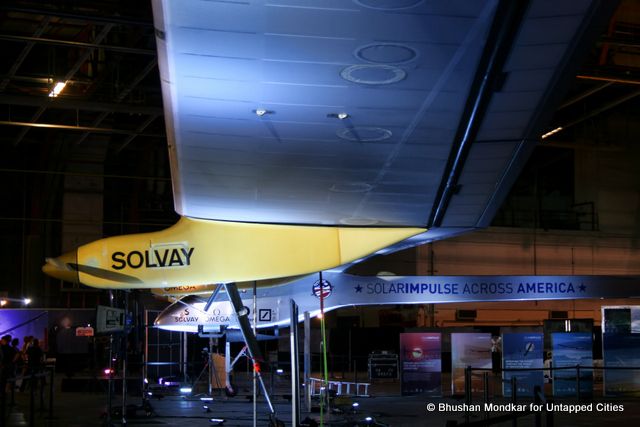
Flanking each side of the cock-pit and at either end of the wings sit the planes four engines.
Now that Solar Impulse has completed its journey across America, it will be retired and dismantled allowing Piccard and Borschberg to move forward in leading their team to construct a more advanced model. The next solar bird they design is intended to complete a flight around the world in 2015. When evaluating the stark realities of what dependable energy means for future generations, the engineers and designers of Solar Impulse encourage the world to courageously think outside-the-box: “After the industrial revolution and the IT revolution, we now face the Energy Revolution. Do we want to fight against it or grab the opportunities it offers?”
Also check out our behind-the-scenes coverage at JFK Airport for the arrival of Air Force One and President Obama, as well as in Hanger 17 where the Space Shuttle Enterprise was stored before moving to the Intrepid.
Subscribe to our newsletter